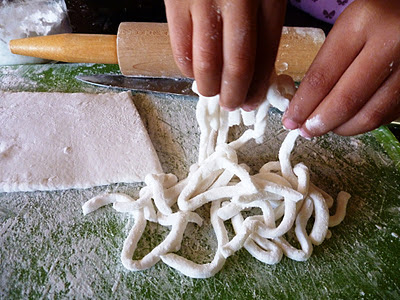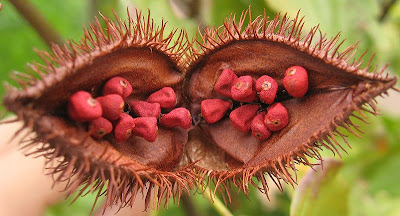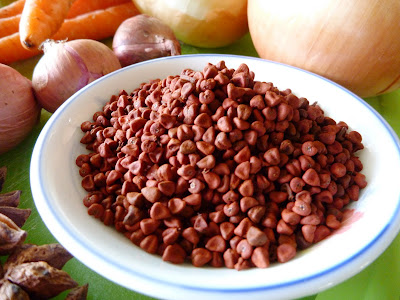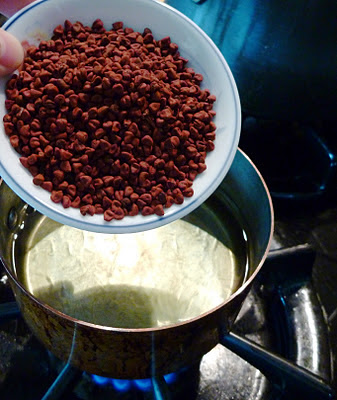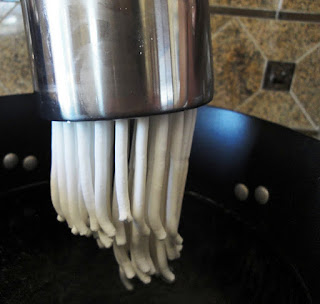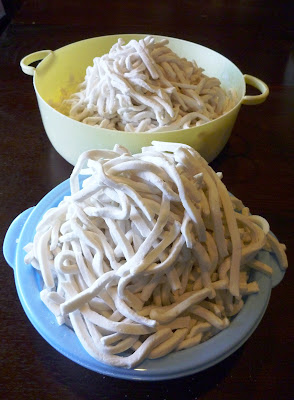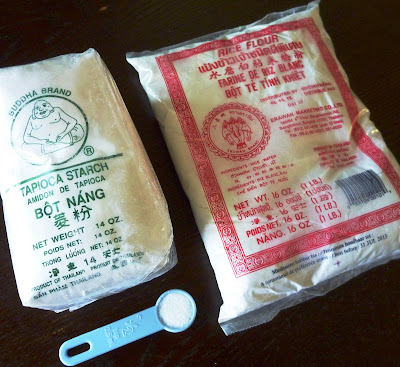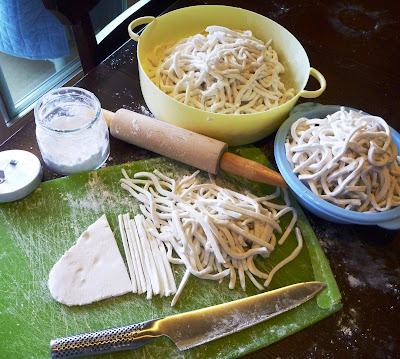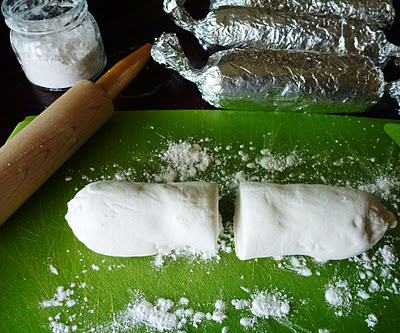I started to make fresh bánh canh when I was in High School. At that time, I was still pretty much a newcomer and there were many things that I needed to adapt to including the popular food. I still recalled how difficult it was for me to eat pizza, hotdog, chili, and hamburger. Though my mother cooked wonderful Vietnamese food, I often found myself in the kitchen making a small batch of
bánh quai vạc, bánh canh and
bánh bao to sastify my craving for Vietnamese food.
Before I launched this blog, my style of cooking was based on eyeballing everything, especially when it came to making the dough for bánh quai vạc, bánh bao or bánh canh.
Recently, I tried this
bánh canh recipe again. This time I measured all the ingredients and revealed step by step the details to my blog fans so that they can try this delicious dish at home.
One caveat, creating the right dough can be very tricky. I tried three batches back to back with the same total amount of flour but different ratio of rice flour and tapioca and each batch gave me a different result; one batch was too mushy and I had to keep adding more flour; another was a little bit dry and so I had to add more boiling water. The more tapioca added, the more chewy the noodles will be. To create a less chewy noodles, add more rice flour but too much rice flour can create harder noodles. So be prepared to adjust the amount of boiling water added to the flour mix as this will change depending on the ratio of flour used.
The recipe below is the best bánh canh texture I came up with. I hope you have better luck of making bánh canh with the exact measurements. I will update this post when I have a more consistent approach to creating the perfect bánh canhdough using a potato ricer.
RECIPE: Bánh Canh (Banh Canh Noodles)
*
Ingredients
2 cups Tapioca Starch
1 1/2 cups Rice Flour
1/2 teaspoon Salt
about 1 1/4 cups Boiling Hot-Water
*
Directions
Making Bánh Canh
Place tapioca flour, rice flour and salt in a mixing bowl and mix it well.
Pour boiling hot-water into flour slowly (make sure the water is boiling. Hot water will not work). Use spatula to mix it up since the flour is very hot and it can burn your hands. Knead flour while the flour is still hot until dough is soft and it doesn’t stick to your hands and the mixing bowl.
Dough that is relatively dry will be too thick and too difficult to press through the plate. If the dough is dried, add a little bit more of boiling hot-water to soften the dough so it can be easy to press through the plate. Add some extra flour if the dough is too tacky. How much water all depends upon your brand of flour, how old it is, and the temperature and humidly of the room.
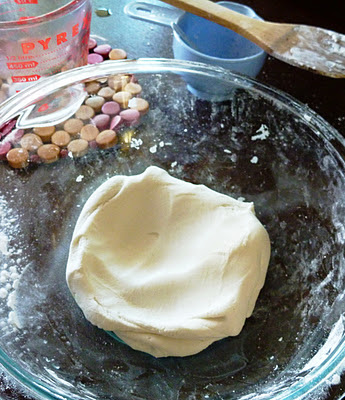
Wrap dough in a plastic wrap then aluminum foil to keep dough from drying out. Let it rest for about 5 minutes.
On a clean work surface, dust a little flour and take your dough mixture out and roll it flat.
Cut it into thin stripes and separate noodle strings with a little bit of flour immediately to prevent from sticking together.
To speed up the cutting process, dust flour on the surface of flatten dough, fold it up and cut.
Noodles can be stored in the fridge for a few days or in the freezer for a long time.
When making bánh canh soup, bring a pot of water to a boil. Add the raw noodles into the boiling water. Cook for a few minutes until the noodles become transparent and float to the surface. Drain and rinse. The purpose of cooking the noodles before adding to the broth pot is to prevent the broth from turning cloudy and viscous due to excess flour.
 |
| click here for Bánh Canh Cua recipe |
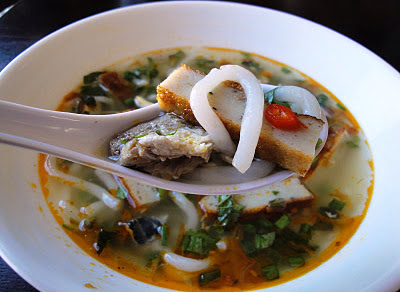 |
| click here for Bánh Canh Chả Cá recipe |
*
Eat Well!

